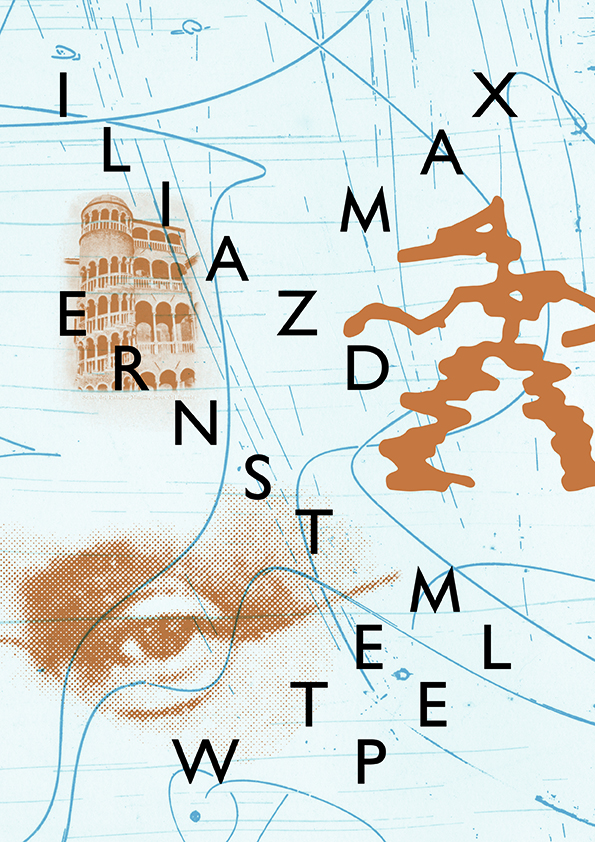
Nika Koplatadze, Grigol Nodia, Juliette George, Rodrigue De Ferluc, Iliazd, Max Ernst, Wilhelm Tempel
As part of the 60th International Art Exhibition — La Biennale di Venezia, the Georgian Pavilion will present “The Art of Seeing — States of Astronomy”, a collaborative project by a team of Georgian and French curators and artists.
“The Art of Seeing – States of Astronomy” showcases 65 Maximiliana or the Illegal Practice of Astronomy, a 1964 work in the form of a book by the Georgian artist, poet, and editor Ilia Zdanevich (1894-1975) and Max Ernst (1891-1976), along with its related archives. This book is dedicated to Wilhelm Tempel (1821-1889), a German astronomer and lithographer who lived and worked in Marseille, France and in Italy, notably in Venice, where he observed comets from the Scala Contarini del Bovolo, the famed spiral staircase at the Palazzo Contarini del Bovolo. Renowned for his “sharp eyes”, Tempel championed an unconventional and sensory astronomy that didn’t rely too heavily on scientific instruments.
The story of this book can be traced back to Tbilisi, where Zdanevich created an arts collective and publishing house named “41°” that promoted a futurist poetic language known as “Zaum”, which resembled a language of the stars. He adopted the name Iliazd soon after arriving in Paris in 1921 and created several major books, including Maximiliana, a landmark project that spanned four countries and three languages while merging poetry and astronomy to highlight the experience of exiles on both the physical and metaphysical planes. The exhibition for the Biennale di Venezia will be held at the Palazzo Palumbo Fossati and will feature Maximiliana along with rarely seen materials from Iliazd’s archives that reveal the importance of stellar patterns and comet-like shapes in the artist’s work and document his journey from Marseille to Florence to Venice in his persistent efforts to recover Tempel’s biography.
The curator Julia Marchand (France) and the research curator Davit Koroshinadze (Georgia) have devised a wholly original concept for a living archive by inviting observers to engage with the fascinating story of Tempel’s biography and its translation into typographical experiments and paintings in order to animate the language of cosmos.
The artists participating in this exhibition live in locations near Marseille and Tbilisi where the story of Maximiliana unfolds. Through their work, they have traced the star-like journeys of the historical figures from Georgia to France to Italy.
Responding to the invitation to explore the legacy of Maximiliana, the French artists Rodrigue De Ferluc and Juliette George have established a visual and spatial identity for the exhibition by creating unique furnishings inspired by the typography that Iliazd used in the book. The Georgian artist Nika Koplatadze reinterprets Maximiliana with a series of art books informed by his readings of star maps and other cosmic materials. Meanwhile, Grigol Nodia has created a work of video art entitled Lonely Planet that takes viewers on a cosmic voyage in search of Eros.
Wilhelm Tempel’s lithographs from the archives of the Arcetri Astrophysical Observatory in Florence are included in the exhibition and provide a unique context for understanding and approaching the history behind Maximiliana and the impetus for Iliazd’s creative journey.
Location: Palazzo Palumbo Fossati, San Marco, 2597, 30124, Venezia VE, Italy
Nearest Vaporetto stops: Accademia, S. Maria del Giglio
Iliazd, prova tipografica preparatoria per Maximiliana, carta, inchiostro, 15 x 41 cm. © Fonds Iliazd